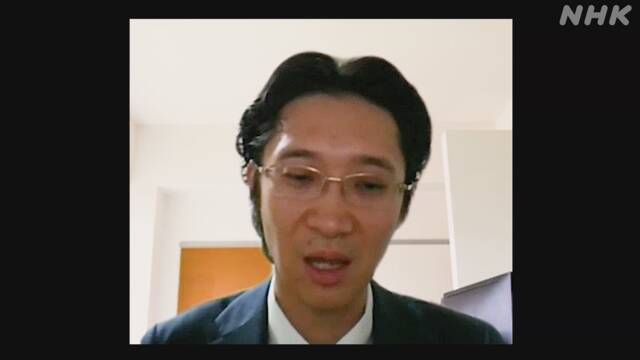Calculation of “self-restraint” nationwide Significant difference by region New Corona April 22 16:46
While an emergency situation was announced nationwide due to the spread of the new coronavirus infection, a group such as the National Institute of Informatics estimated the extent of refraining from going out around the country based on mobile phone data, It turned out that there is a big difference.
This is a group of groups such as National Institute of Informatics and Canon Global Strategy Institute, which analyzed the information of NTT Docomo mobile phone base stations while protecting their privacy.
The group calculated the "self-restraint rate" by estimating how much they went out from the difference between the daytime and nighttime populations in areas with many houses with an accuracy of 500 meters square and comparing it with the average value in January. Did.
As a result, on the 19th, which was the first Sunday after the national emergency declaration was issued on the 16th of this month, by prefecture, the self-restraint rate was highest in Tokyo at 58%, followed by Kanagawa prefecture. Was 55% and Osaka Prefecture was 51%.
On the other hand, Miyazaki Prefecture was 32% and Kagoshima Prefecture was 33%, showing that there are regional differences.
Looking at weekdays, the self-restraint rate on the 20th was relatively high in urban areas, such as 53% in Tokyo, 48% in Kanagawa, and 42% in Chiba, but more than 70%. The 34 roads and prefectures that correspond to the above showed a tendency that the difference between regions was larger than that during the holidays, such as staying in the 10% to 20% range.
According to the group, while working from home is progressing in urban areas, there is a possibility that measures are not yet fully implemented in rural areas.
Associate professor Takayuki Mizuno of the National Institute of Informatics, who conducted the analysis, said, "It has been pointed out that the number of people in major downtown areas has decreased, but there are many people who go out. I would like it to be an index to grasp the exact situation of self-restraint in order to reduce contact by 80%. "
Change in self-restraint rate in response to government / administration
From this analysis, it was found that the self-restraint rate fluctuated greatly in response to the response of the government and administration.
In Tokyo, the government requested a temporary closure on February 29.
The self-restraint rate on the previous day was 6%, but on February 29th it was 14%, and on Sunday, March 1st, it was 21%, which was a sudden rise.
However, on March 20th and 21st, when the cherry blossom season and the three consecutive holidays overlapped, it fell from 6% to around 9%, suggesting that the situation seemed to have remained the same.
In addition, the self-restraint rate has risen sharply since the government issued an emergency declaration in seven prefectures including Tokyo this month, and it was the first weekend since 16th of this month when the emergency declaration was expanded nationwide. On Saturday, it rose to 63%.
The higher the number of people infected, the higher the self-restraint rate
According to the group, this analysis shows that the self-restraint rate tends to be higher in municipalities with a large number of infected people, such as Tokyo, Kanagawa, and Osaka.
Among them, in Hokkaido, for example, the self-restraint rate increased to about 37% on March 1st, which was Sunday immediately after the number of new infections increased and the original emergency declaration was issued.
However, on Sunday, March 29, when the number of new infected people had been declining, the self-restraint rate dropped to 18%, and when the number of infected people began to increase again in April, the self-restraint rate also increased, resulting in April 19 It was 35% on Sunday of the day.
Associate professor Takayuki Mizuno of the National Institute of Informatics, who conducted the analysis, said, "People respond sensitively to the number of people who have recently been infected, but it is easy to forget the past infection status. It is necessary to convey the exact number of

